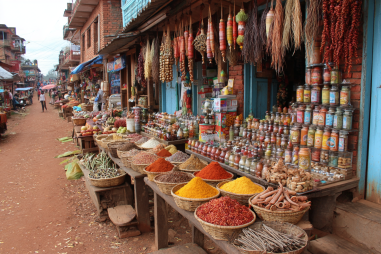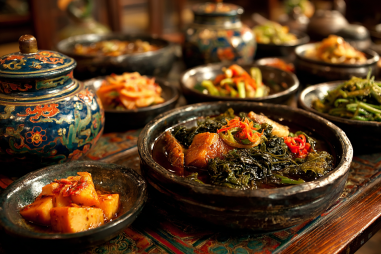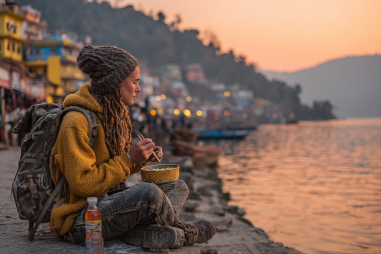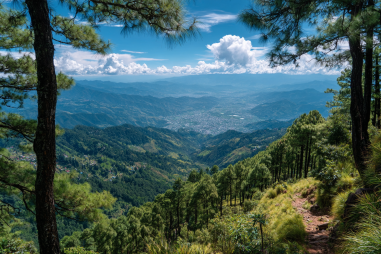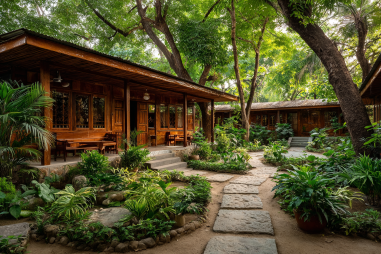Planning a trip to Bardia National Park is an exciting adventure for any nature lover or wildlife enthusiast. This stunning park, located in the far western region of Nepal, offers an incredible opportunity to experience the country’s rich biodiversity and pristine wilderness. To ensure your visit is enjoyable and hassle-free, it helps to be well-prepared with some essential travel tips. From understanding how to get there and the necessary permits, to knowing what to pack and how to respect local customs, this guide will help you make the most of your journey to Bardia National Park.
Getting to Bardia National Park
Bardia National Park is situated in the Karnali Province of Nepal, roughly 500 kilometers west of Kathmandu. Reaching the park can be a bit of an adventure in itself, but there are several options depending on your budget, time constraints, and comfort level.
The most common way to get to Bardia is by road or by air. If you prefer flying, you can catch a domestic flight from Kathmandu or Nepalgunj to Tharbarahi Airport, which is the closest airport to the park, located just a few kilometers away. From there, you can hire a taxi or arrange a pick-up with your lodge or safari operator.
Alternatively, many travelers enjoy the scenic but longer road journey. Buses and jeep rentals are available from major cities such as Kathmandu, Nepalgunj, and Surkhet. The roads can be winding and sometimes bumpy, especially during the monsoon season, so prepare accordingly. If you choose the road route, you might want to break the trip into two days to avoid fatigue.
Organizing transportation with a reputable tour company or lodge ahead of time is often recommended to ensure a smooth transfer and to get insights on the best travel routes.
Visa and Permit Requirements
If you’re an international traveler, you will need a valid visa to enter Nepal. Tourist visas can be easily obtained on arrival at Tribhuvan International Airport in Kathmandu or at designated land border crossings. You can also apply online in advance via the Nepalese Department of Immigration website, which can save time upon arrival.
When visiting Bardia National Park, you’ll also need to obtain park entry permits. These permits help in conservation efforts and regulate visitor flow in the protected area. Your safari operator, lodge, or tour company can typically handle the permit process on your behalf, but if traveling independently, be sure to visit the Department of National Parks and Wildlife Conservation office in Nepalgunj or Khata corridor entry points.
Additionally, if you plan to engage in specific activities such as wildlife photography or guided safaris, you may need additional permissions, so check in advance and plan accordingly.
Packing Essentials and Gear
What you pack for your Bardia National Park trip can significantly impact your overall experience. Since much of your time will be spent outdoors in a natural setting, choosing the right gear is crucial.
Here are some essentials to bring:
- Lightweight, breathable clothing: The weather can be warm and humid during the day, so opt for moisture-wicking fabrics to stay comfortable.
- Long sleeves and pants: These protect against insect bites and sun exposure when exploring the forest and grasslands.
- Sturdy walking shoes or hiking boots: Trails and safari rides might involve uneven terrain, so come prepared.
- Hat and sunglasses: For sun protection.
- Insect repellent: Mosquitoes and other insects are common, especially during dawn and dusk.
- Binoculars and camera: To capture wildlife sightings such as Bengal tigers, one-horned rhinoceros, and various bird species.
- Reusable water bottle: Staying hydrated is important, but opt for refillable bottles to minimize plastic waste.
- Basic first aid kit: Include remedies for minor cuts, insect bites, and any prescription medications you may need.
- Rain gear: If traveling during monsoon season, a waterproof jacket or poncho is essential.
Make sure to pack light but thoughtfully; bulk luggage can be cumbersome, especially when traveling by small aircraft or jeep.
Local Culture and Etiquette
Visiting Bardia National Park offers you a chance to engage not only with nature but also with local communities living nearby. Respecting their culture and traditions is an important part of responsible travel.
Here are some tips to keep in mind:
- Dress modestly: While Nepalese people are generally friendly and welcoming, conservative dress shows respect, especially when visiting villages or religious sites.
- Ask permission before photographing people: Some locals may be uncomfortable being photographed, so it’s always polite to request consent.
- Be mindful of local customs: Nepalese culture places importance on greetings, such as the traditional ‘Namaste’ (palms together with a slight bow). Using this greeting can show appreciation and respect.
- Support local businesses: Purchasing handicrafts or staying at locally operated lodges helps the community economically and encourages sustainable tourism.
- Avoid feeding wildlife: Feeding animals disrupts their natural behavior and could be dangerous.
Health and Safety Precautions
Your health and safety should be a top priority during your visit to Bardia National Park. When dealing with wildlife and natural environments, it’s essential to take precautions:
- Vaccinations: Check with your healthcare provider about recommended vaccinations before traveling to Nepal, such as Hepatitis A, Typhoid, and Tetanus. Malaria prophylaxis may be advised depending on the season and areas visited.
- Drinking water: Always drink bottled or purified water. Avoid ice cubes or tap water to reduce the risk of stomach illnesses.
- Wildlife safety: Follow all guidelines from park authorities and guides. Never wander alone or off marked trails. Keep a safe distance from animals and never provoke them.
- Emergency contacts: Familiarize yourself with local emergency numbers and the location of nearest medical facilities before setting out.
- Travel insurance: Comprehensive travel insurance that covers medical emergencies, evacuation, and trip cancellations is strongly recommended.
Currency and Communication Tips
The official currency in Nepal is the Nepalese Rupee (NPR). ATMs are available in larger towns like Nepalgunj, but they may not be reliable or widely accessible close to the park. It’s best to carry sufficient cash in smaller denominations when traveling to Bardia. Major credit cards are not commonly accepted in remote areas, so plan accordingly.
For communication, mobile networks cover many parts of Nepal, including areas around Bardia National Park, but connectivity can be patchy in forested or remote zones. Purchasing a local SIM card with data can help maintain contact. Wi-Fi may be offered at some lodges and hotels but do not expect high-speed or uninterrupted service.
Learning a few basic Nepali phrases can go a long way in easing interactions and showing respect to locals.
Preparing for a Successful Trip
With its raw beauty and diverse wildlife, Bardia National Park is a fantastic destination for those looking to experience Nepal’s natural splendor beyond the more popular spots. By planning your travel carefully, respecting local customs, and packing appropriately, you set yourself up for an unforgettable adventure.
Whether you are tracking elusive tigers on a guided jeep safari, spotting rhinos in the grasslands, or immersing yourself in the tranquil surroundings, preparation is the key to maximizing your enjoyment and safety. Take the time to research, connect with local operators, and approach your trip with an open and respectful mindset. Your visit to Bardia National Park promises unique memories and a deeper appreciation for Nepal’s incredible natural heritage.


